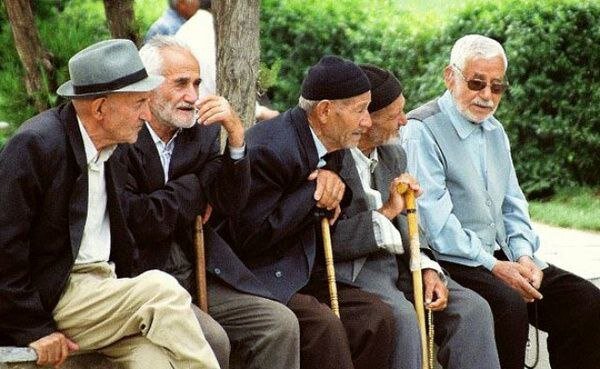Elderly population to rise by 20% in 3 decades

TEHRAN – The number of women and men aged above 60 currently constitute about ten percent of the country's population, but the figure is estimated to grow to approximately thirty percent over the next three decades, the deputy health minister has said.
In the last two years, the fertility rate has stabilized around 1.6 which has intensified concerns over the decreasing trend in population growth in the coming years and the probability of turning Iran into one of the oldest countries in the world, IRIB quoted Alireza Raeisi as saying.
To face the problem, the fertility rate should reach 2.1 or 2.5 from 1.6. Otherwise, the country’s population will decline to about 50 million by the calendar year 1480 (2101–2102), he stressed.
A total of 500,000 births and 420,000 deaths are registered in the country annually. However, with the aging of the population deaths will exceed births, the official noted.
Youth population growth target yet to be achieved
Despite offering incentives to encourage childbearing in line with youth population law, the desired growth in the youth population has not been accomplished yet.
At best, Iran’s population with a total fertility rate of 2.5 will reach 102,890,000 by the next seven years, IRIB quoted Mohammad-Javad Mahmoudi, an official with the Civil Registration Organization, as saying.
According to Civil Registration Organization’s report, the total fertility rate in Iranian years 1396 (2027-2018), 1397 (2018-2019), 1398 (2019-2020), 1399 (2020-2021), and 1400 (2021-2022) were 2,09, 1.95, 1,74, 1.65, 1.61 per each woman, respectively.
In May, Hasan Farshidi, an official with the health ministry, said two years after the enactment of the law on supporting families and the youth, investigations have shown that the health ministry has played a central role in the implementation of the law.
“Since the implementation of the law, the number of births among mothers aged 20 to 24 has notably increased,” the official added.
The rate of mothers giving birth to three children increased from 16 percent in the Iranian year 1398 (March 2019-March 2020) to 18.97 percent in 1402 (March 2023 –March 2024) and even the fourth childbirth increased from 5 percent to about 7 percent, Farshidi stated.
Meanwhile, Saber Jabbari, the head of the health ministry’s youthful population center, has said the ministry was recognized as the best organization, implementing programs for the youth in the last year, which ended on March 19.
“A total of 32,000 nurse aides are providing health care services in rural and urban areas. Also, 22,000 health care providers offer fertility services in urban areas, with 13,809 of them being midwives,” Jabari further noted.
There are 10,200 midwives working in delivery rooms. Also, Jabbari added that 2,086 and 6,689 gynecologists work in state-run and private centers.
Over 188,000 registered births were third-born, more than 63,000 births were fourth-born, and over 20,000 were fifth-born children.
A total of 462 marriage education centers are active in the country training various topics such as sexual health, fertility, and the complications of the prevention of pregnancy to young couples.
MT/MG
Leave a Comment